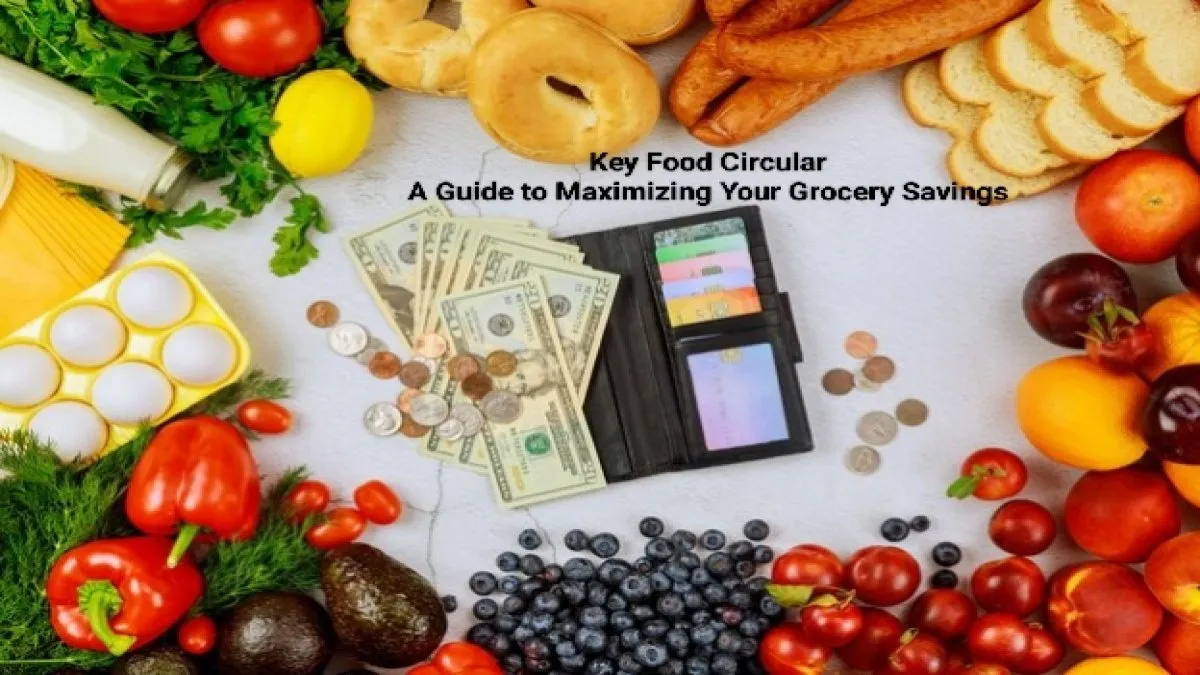How Rising Costs Are Hitting Illinois Families Harder Than Most States
Illinois families face 17% higher grocery costs than national average, plus the highest tax burden. Learn how smart shopping strategies and digital tools can help you fight back against inflation in Chicago and beyond.


How Rising Costs Are Hitting Illinois Families Harder Than Most States
Published August 19, 2025 | Last Updated: August 19, 2025
Illinois families are feeling the economic squeeze more intensely than families in most other states. With unemployment at 4.8% compared to the national average of 4.1%, the highest state and local tax burden in the country, and grocery costs that exceed the national average by 17% in Chicago, Illinois households are searching for every possible way to stretch their budgets.
The recent economic uncertainty, including potential new tariffs that could add $1,300 annually to household costs, makes strategic grocery shopping more critical than ever for Illinois families. Here's how the current economic climate is specifically impacting our state and what you can do to protect your family's budget.
The Illinois Economic Reality Check
By the Numbers: Why Illinois Hurts More
Employment Challenges
- Illinois unemployment: 4.8% vs. 4.1% national average
- Personal income growth: 3.8% vs. 5.2% nationally
- GDP decline: 2.2% drop in early 2025 (one of biggest U.S. drops)
Cost of Living Burden
- Highest state/local tax burden nationally
- Third-highest corporate tax rate
- Chicago grocery costs: 17% above national average
- Housing costs: 15% above national average in Chicago metro
The Real Impact on Families Recent surveys show that 68% of Illinois families have reduced their grocery spending in the past year, compared to 52% nationally. For a typical Chicago-area family of four, this means finding ways to cut $2,400-3,200 annually from their grocery budget just to maintain their standard of living.
How Grocery Inflation Hits Illinois Harder
The Local Grocery Cost Crisis
While national food inflation sits at 2.9%, Illinois families face additional pressures:
Store Competition Challenges
- Limited discount grocery options in many Chicago suburbs
- Higher real estate costs translate to higher grocery prices
- Transportation costs for getting products to Illinois stores
- State taxes that impact final retail prices
Specific Category Impacts in Illinois
- Beef and veal: +8.8% year-over-year (hits BBQ-loving Midwest families hard)
- Eggs: +10% increase (staple for budget meals)
- Nonalcoholic beverages: +4.1% (family essential)
- Fresh vegetables: Higher due to transportation costs to reach Illinois
What This Means for Your Weekly Shopping
For a typical Illinois family spending $150 weekly on groceries, these increases mean:
- Additional $312 annually just from food inflation
- Extra $255 annually from state-specific cost pressures
- Potential $1,300 more if new federal tariffs take effect
- Total impact: Up to $1,867 more per year
Economic Survival Strategies for Illinois Families
1. Leverage Technology for Maximum Savings
Digital Couponing Has Become Essential With 165.5 million Americans now using digital coupons (93% via mobile), smart Illinois families are turning technology into their primary defense against rising costs.
The Jewel-Osco Advantage For the 2.5 million Illinois households that shop regularly at Jewel-Osco, browser extensions that automatically clip digital coupons can save $30-80 per shopping trip. At current Illinois grocery inflation rates, this can offset the entire annual food cost increase for many families.
Stacking Savings Strategies Illinois families using multiple apps and extensions together report average monthly savings of:
- Digital coupon clipping: $35-65
- Receipt scanning apps: $15-25
- Price comparison tools: $20-40
- Store loyalty programs: $25-50
- Total potential: $95-180 monthly
2. Strategic Shopping for Illinois Economics
Timing Your Shopping
- Wednesday mornings: New sales start, freshest selection of marked-down items
- Sunday evenings: Clearance items before Monday restocking
- End of month: Many stores clear seasonal inventory
Store Strategy for Illinois Markets
- Jewel-Osco: Strong digital coupon program, prevalent throughout state
- Aldi: Limited locations but significant savings (25-30% below average)
- Walmart: Price competitive but requires traveling to locations outside city centers
- Local ethnic markets: Often 15-20% below chain store prices
3. Government Assistance Maximization
Underutilized Programs in Illinois
- Only 51% of WIC-eligible families participate (missing $1,200+ annually)
- SNAP benefits can be maximized with proper coupon stacking
- Local food pantries supplement grocery budgets by $40-80 monthly
How to Combine Benefits with Coupons Illinois families using SNAP benefits can still use manufacturer coupons and digital store coupons, effectively doubling their purchasing power on many items.
Illinois-Specific Coping Strategies
High-Tax State Budget Planning
Account for Total Cost Impact When planning your grocery budget, Illinois families need to consider:
- State sales tax on some grocery items
- Higher property taxes that reduce discretionary income
- Gas taxes that increase transportation costs for shopping trips
Monthly Budget Framework Financial advisors recommend Illinois families allocate:
- 15-18% of income to groceries (vs. 12-13% national average)
- 3-5% additional buffer for economic uncertainty
- Emergency fund goal: 4-6 months expenses (vs. 3-4 months in lower-cost states)
Community Resources in Illinois
Chicago-Area Family Support
- Greater Chicago Food Depository: 700+ food pantries
- Local Facebook groups: "Chicago Area Deals and Coupons" (50,000+ members)
- Community college financial literacy programs
- Library-hosted workshops on digital couponing
Suburban Support Networks
- Naperville: Family service programs with grocery assistance
- Aurora: Community kitchen programs and food sharing
- Schaumburg: Senior citizen discounts at local grocers
- Evanston: University community sharing programs
Taking Action: Your 30-Day Illinois Savings Challenge
Week 1: Technology Setup
- Install Jewel-Osco Coupon Clipper browser extension
- Download 2-3 grocery apps (Ibotta, Checkout 51)
- Set up store loyalty accounts for primary shopping locations
- Target savings: $25-40
Week 2: Strategic Shopping
- Plan meals around current sales and digital coupons
- Try one new budget-friendly store or ethnic market
- Implement receipt scanning for cash back
- Target savings: $35-55
Week 3: Community Engagement
- Join local deal-sharing Facebook groups
- Research government assistance eligibility
- Plan shopping trips to maximize fuel efficiency
- Target savings: $30-50
Week 4: Advanced Strategies
- Practice coupon stacking on high-value items
- Build relationships with store managers for markdown timing
- Start building strategic stockpile of non-perishables
- Target savings: $40-70
30-Day Total Target: $130-215 savings
The Bigger Picture: Economic Resilience
Building Long-Term Financial Defense
Emergency Fund Focus Given Illinois's economic volatility, families should prioritize building emergency funds:
- Start with $500 emergency goal
- Use grocery savings to build fund faster
- Target 6 months of expenses (higher than national recommendation)
Skill Development
- Learn basic cooking skills to reduce restaurant spending
- Develop meal planning expertise
- Master digital coupon strategies
- Build community networks for mutual support
Real Illinois Family Success Stories
The Martinez Family - Aurora
Challenge: Single income, 3 children, $180 weekly grocery budget Strategy: Jewel-Osco extension + meal planning + ethnic market shopping Result: Cut grocery spending to $120 weekly, saving $3,120 annually Quote: "The browser extension saves me 2 hours a week and $50+ every shopping trip. In Aurora's economy, that makes the difference between struggling and managing."
The Chen Family - Naperville
Challenge: Dual income but high property taxes, preference for organic foods Strategy: Strategic shopping at multiple stores, digital coupon maximization Result: Maintained organic food preferences while cutting costs 35% Quote: "We thought organic meant expensive until we learned to stack digital coupons with sale cycles. Now we spend less on organic than we used to on conventional."
The Johnson Family - Chicago (South Side)
Challenge: Fixed income, limited transportation, food desert area Strategy: Community group shopping, SNAP + coupon optimization Result: Increased food security while building 3-month emergency fund Quote: "Learning to use the digital tools turned grocery shopping from a stress into a win. Every week I save money is a victory."
Looking Ahead: Economic Preparedness
What Illinois Families Need to Watch
Economic Indicators
- State budget challenges that could impact services
- Federal tariff implementations affecting import prices
- Regional unemployment trends
- Local business closures affecting job market
Inflation Factors
- Transportation costs (gas prices, delivery fees)
- Housing market impacts on discretionary income
- Seasonal food price fluctuations
- Supply chain disruptions
Staying Ahead of the Curve
Monthly Review Process
- Track actual grocery spending vs. budget
- Calculate savings from digital tools and strategies
- Adjust strategies based on performance
- Build emergency fund with saved money
Community Engagement
- Share successful strategies with neighbors
- Participate in local money-saving groups
- Support community resilience initiatives
- Advocate for family-friendly economic policies
Tools and Resources for Illinois Families
Essential Digital Tools
- Jewel-Osco Coupon Clipper: Automatic coupon clipping for Illinois's largest grocery chain
- Flipp: Browse weekly ads from Chicago-area stores
- GasBuddy: Find cheapest gas for grocery shopping trips
- Mint or YNAB: Budget tracking to monitor progress
Illinois-Specific Resources
- Illinois Department of Human Services: Food assistance programs
- 2-1-1 Illinois: Comprehensive resource directory
- Greater Chicago Food Depository: Food security programs
- University of Illinois Extension: Family financial education
Emergency Contacts
- SNAP Hotline: 1-800-843-6154
- WIC Program Locator: Illinois.gov/WIC
- Food Pantry Locator: FeedingAmerica.org
- Utility Assistance: LIHEAP Illinois
Conclusion: Turning Economic Challenges into Opportunities
Illinois families face unique economic pressures that require strategic responses. While we can't control inflation, unemployment rates, or tax policies, we can control how we respond to these challenges.
The combination of digital tools, community resources, and strategic shopping can help Illinois families not just survive but thrive despite economic headwinds. Families using comprehensive savings strategies report reducing their grocery costs by 25-40% while maintaining or even improving their nutrition and food satisfaction.
The key is starting small, building skills gradually, and leveraging both technology and community support. Every dollar saved on groceries is a dollar that can go toward building financial security, reducing debt, or improving your family's quality of life.
In Illinois's challenging economic environment, smart shopping isn't just about saving money—it's about building resilience, maintaining dignity, and creating opportunities for your family's future success.
Ready to start fighting back against rising costs? Install the Jewel-Osco Coupon Clipper extension today and join thousands of Illinois families who are already saving $30-80 per shopping trip. Because in today's economy, every dollar saved is a victory for your family's financial future.